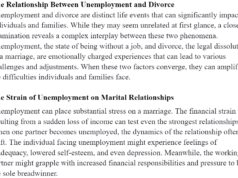SPONSORED CONTENT
Settlements for personal injuries are essential in delivering justice for people who have been harmed due to another person’s carelessness. Understanding how these settlements are calculated is critical for victims and their legal representatives. In this article, we will delve into the key factors that influence the calculation of personal injury settlements.
Medical Expenses and Treatment Costs
One of the primary factors in determining the value of a personal injury settlement is the extent of the victim’s medical expenses and treatment costs. The victim’s medical fees and treatment costs include current medical bills and anticipated future payments related to the injury. The severity of the injury, necessary surgeries, ongoing therapy, medication, and rehabilitation all contribute to the overall value of the settlement. “Documentation and evidence of these expenses are critical during negotiations or court proceedings,” says attorney Sean Roberts of Roberts Markland LLP, Trial Lawyers.
Lost Wages and Loss of Earning Capacity
Another crucial element in calculating personal injury settlements is the impact on the victim’s ability to work and earn a living. Lost wages refer to the income lost due to the injury, including time taken off work for medical appointments and recovery. Additionally, if the injury results in a long-term or permanent disability that affects the victim’s earning capacity, the settlement amount may include compensation for the potential income that would have been earned.
Pain and Suffering
Physical and emotional pain and suffering are intangible but important components of personal injury settlements. Compensation for pain and suffering aims to acknowledge the anguish, distress, and diminished quality of life experienced by the victim due to the injury. Determining the value of pain and suffering is subjective. It can be influenced by factors such as the severity of the injury, duration of pain, impact on daily activities, and mental anguish. In some cases, a multiplier based on the extent of suffering may be used to calculate this portion of the settlement.
Property Damage and Other Economic Losses
If a personal injury incident damages the victim’s property, such as a car accident, the cost of repairs or replacement may be included in the settlement calculation. The total settlement amount may also be impacted by other financial losses, like the loss of personal property or the requirement for home renovations to accommodate a disability. Documenting these losses through receipts, estimates, and expert assessments strengthens the case for fair compensation.
Comparative Fault or Contributory Negligence
In some personal injury lawsuits, the victim’s actions or negligence may have caused the accident or injury. Each jurisdiction employs various legal doctrines to address such scenarios as comparative fault or contributory negligence. Under these doctrines, the settlement amount may be reduced based on the degree of responsibility assigned to the victim. For instance, if the victim is deemed 20% at fault for the accident, the final settlement may be reduced by that percentage.
Conclusion
Personal injury settlements are carefully calculated by considering several key factors that influence the compensation awarded to the victim. Medical expenses, lost pay, pain and suffering, property damage, and other economic losses are all included in the settlement’s total sum. Understanding how these factors are evaluated is crucial for victims and their legal representatives during negotiations or court proceedings. It is recommended to consult with a personal injury attorney who can assess the case’s specific details and advocate for fair compensation on behalf of the injured party.














![Video: Sen. Mark Warner Says Last Night, “you saw an angry old man [Trump] giving a partisan screech that doesn’t solve anything”](https://bluevirginia.us/wp-content/uploads/2025/12/warner1218-100x75.jpg)
